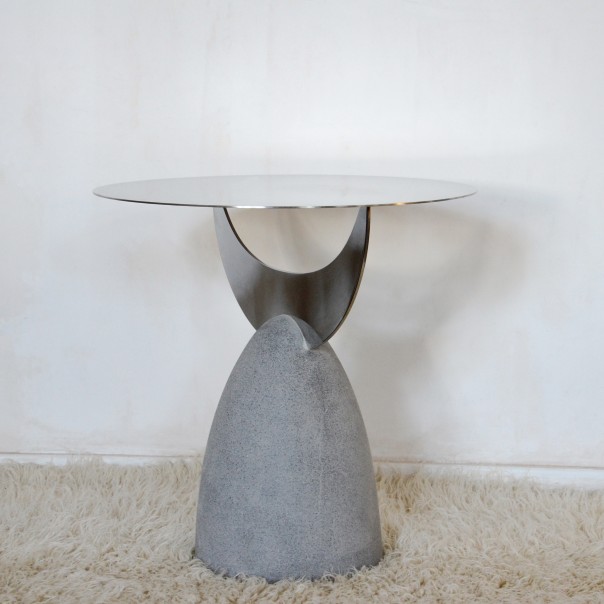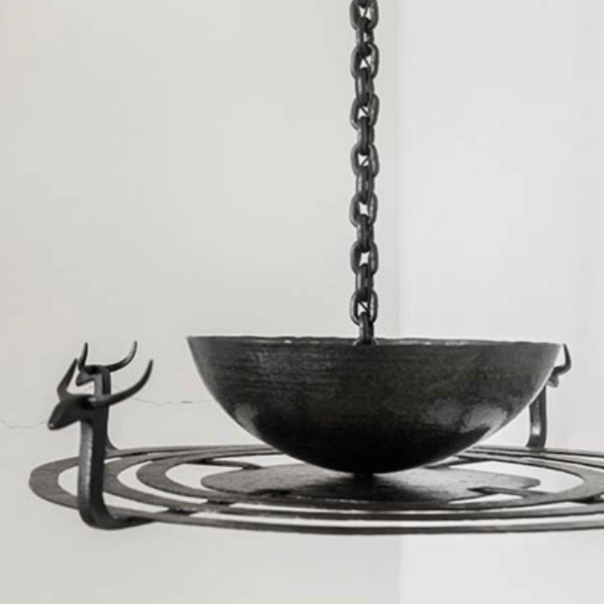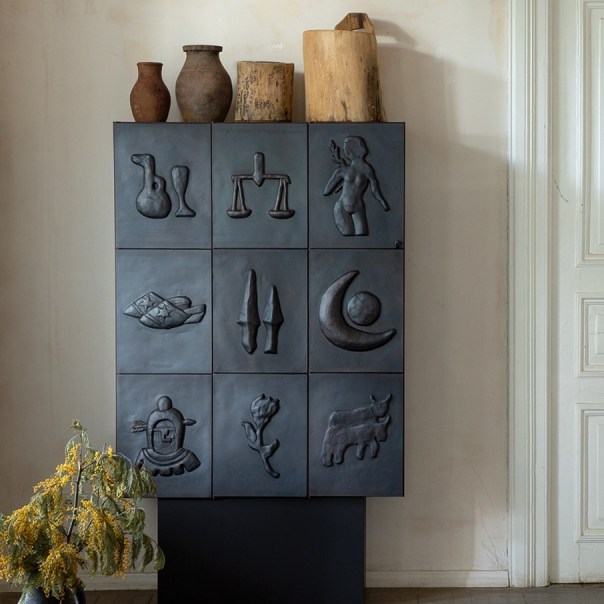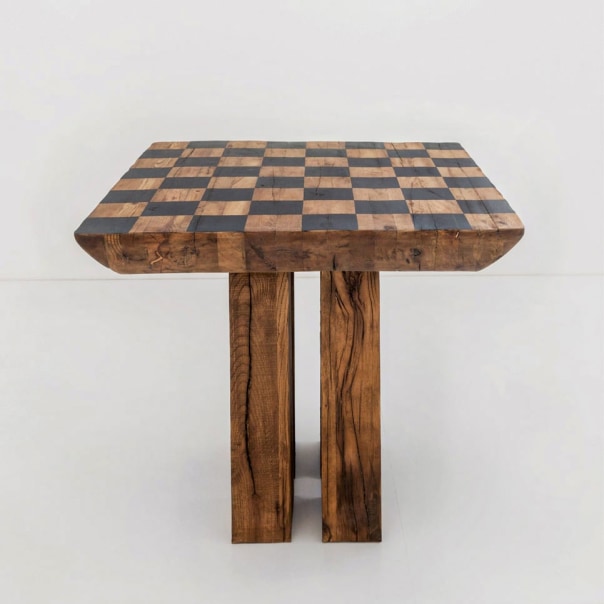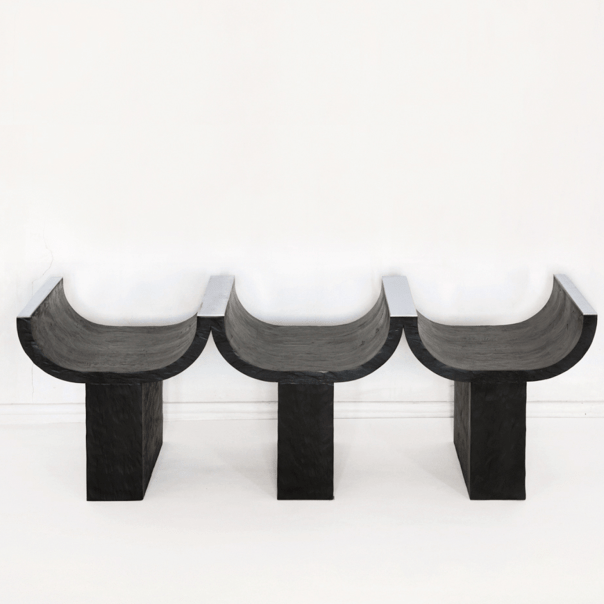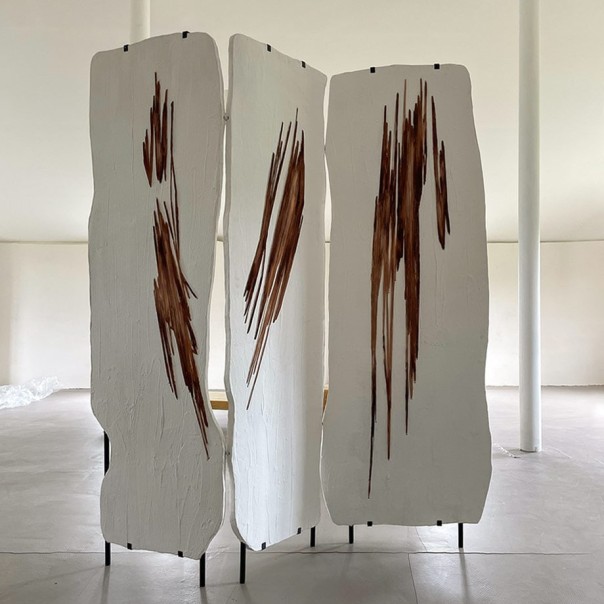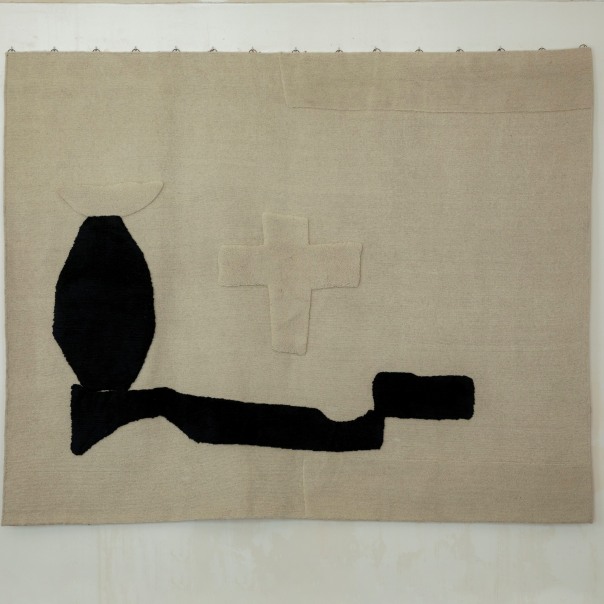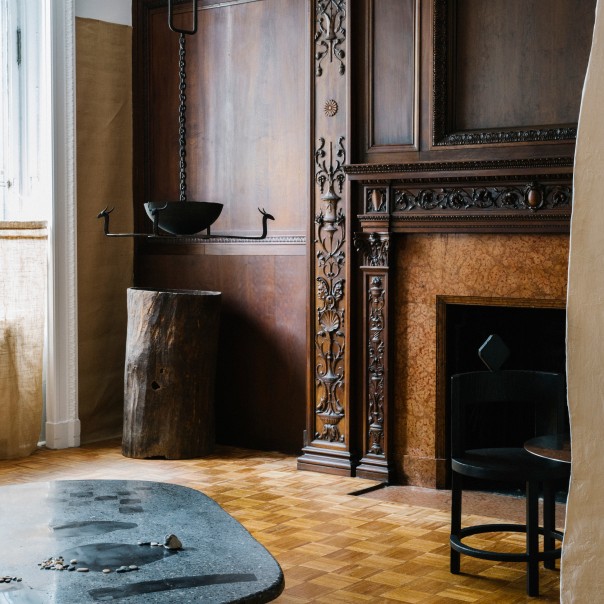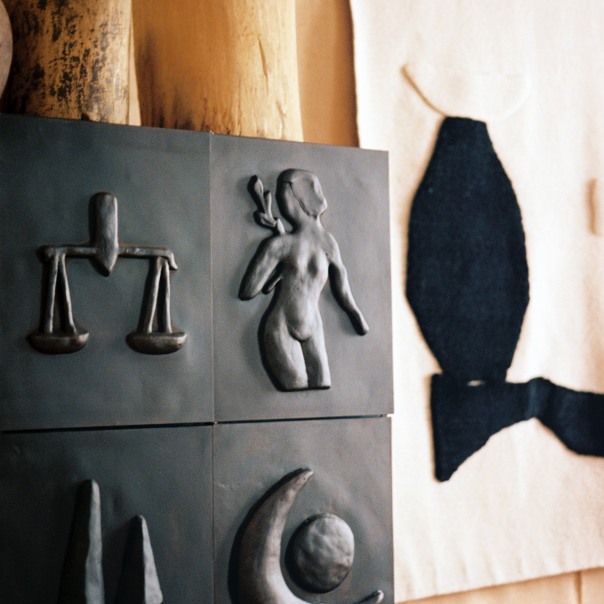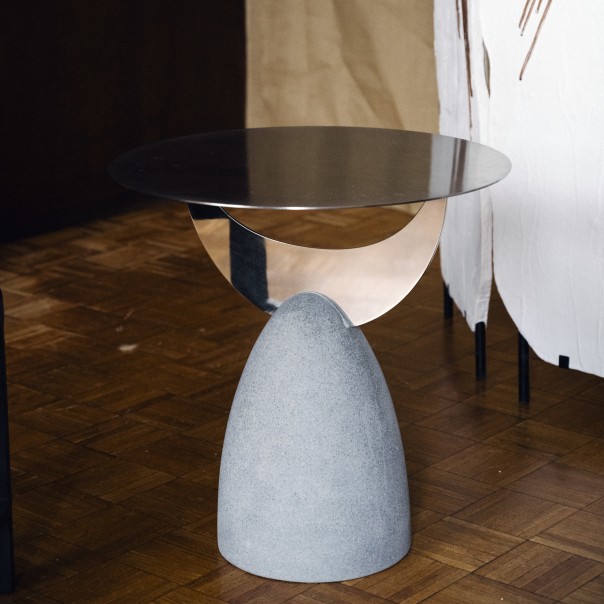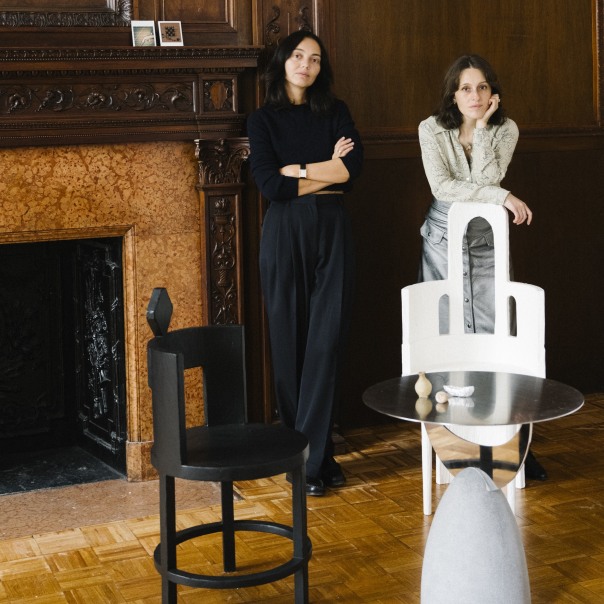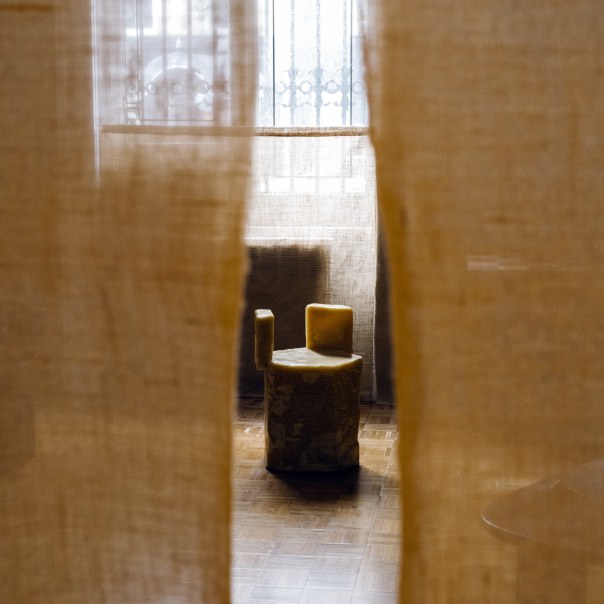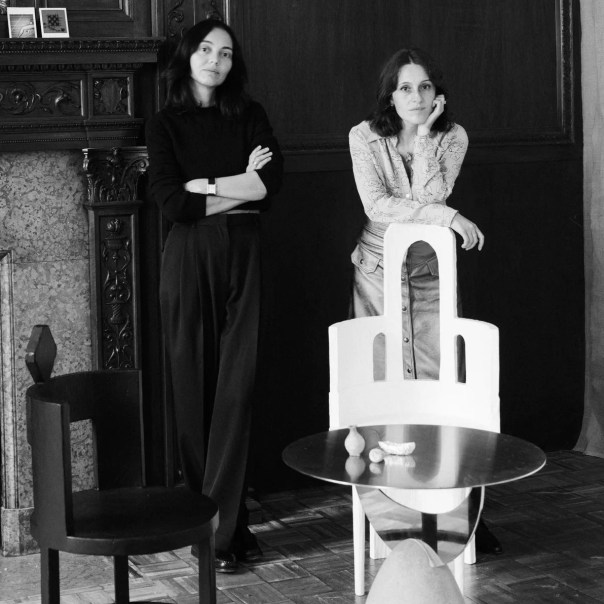
The work of Rooms Studio has concerned itself with questions of nomenclature since the Tbilisi-based design atelier was co-founded by Nata Janberidze and Keti Toloraia in 2007. Take, for instance, the studio’s name: in adopting the basic unit of interior space as the title of their practice, Janberidze and Toloraia also emphasized the emotional force of interiority and inner life in determining their creative output.
The studio’s largest U.S. exhibition to date, Distant Symphony expands upon this impulse to focus inward. The title is again a chief concern—some of the objects included here were designed during the global pandemic, under a regime of forced isolation that made the studio’s typically collective work process untenable. The pieces shown here are the results of Rooms’ search for a way forward. The first room, an antechamber of sorts, evokes the intimate quality of a private home. Shown here are trinkets and personal effects chosen by Janberidze and Toloraia for their emotive qualities; a low background noise emphasizes the climate of urban domesticity. The ensuing gallery space features highlights of Rooms’ recent design output. Here, the subtle scent of organic materials provides a sensory indication of the atelier’s interest in dichotomies: natural and man-made, personal and collective, local and cosmopolitan.
In light of the global circumstances, Janberidze and Toloraia felt it was especially important to pursue collaborative work. Rooms invited three artists—Shotiko Aptsiauri, Salome Chigalashvili and Mariana Chkonia—to conduct a dialogue and shared design process. As such, this exhibition is a kind of polyphonic meditation on a need for solitude and desire for companionship. The practice of polyphonic singing, essential to Georgian folk culture, is reinterpreted here as a design endeavor. Chigilashvili, working with unprocessed yarn, interpreted folk motifs by adapting embroidery to the scale of furniture with expansive stitches applied to painted boards. Whereas Aptsiauri proposed beeswax as a material solution for the Sacral Geometry collection, to which the wax stool and candle holder on view belong—the haptic qualities of these pieces will be familiar to anyone who has seen beekeepers tending to their hives in the Georgian countryside or watched candles burn inside a Georgian church.
Also included in the exhibition are objects from Rooms’ celebrated Wild Minimalism and DNA Archive collections, both of which seek to apply Georgian artisanal knowledge to the design of contemporary furniture. Both collections mine “our identity,” as the designers call it—a return to the roots of highly localized expertise. The curvilinear wooden chairs of the Wild Minimalism collection evoke primeval thrones with their palpably hand-carved quality; whereas the wooden chess table, from the DNA Archive collection, takes inspiration from Soviet-era public furniture still found in Tbilisi.
And therein lies the affective logic of Distant Symphony—call it what you may, but the important part is that you feel it too.
—Anna Kats
















